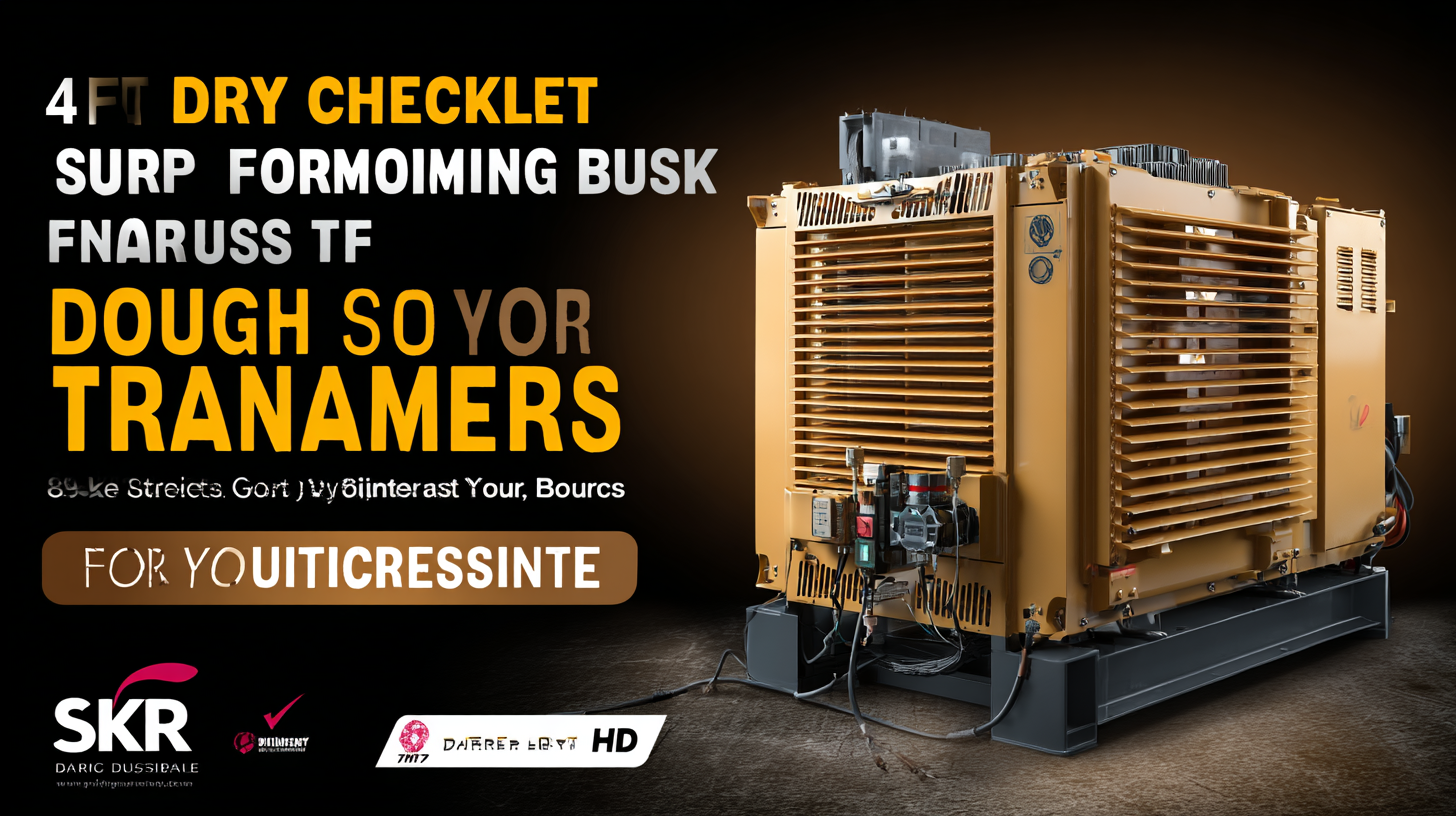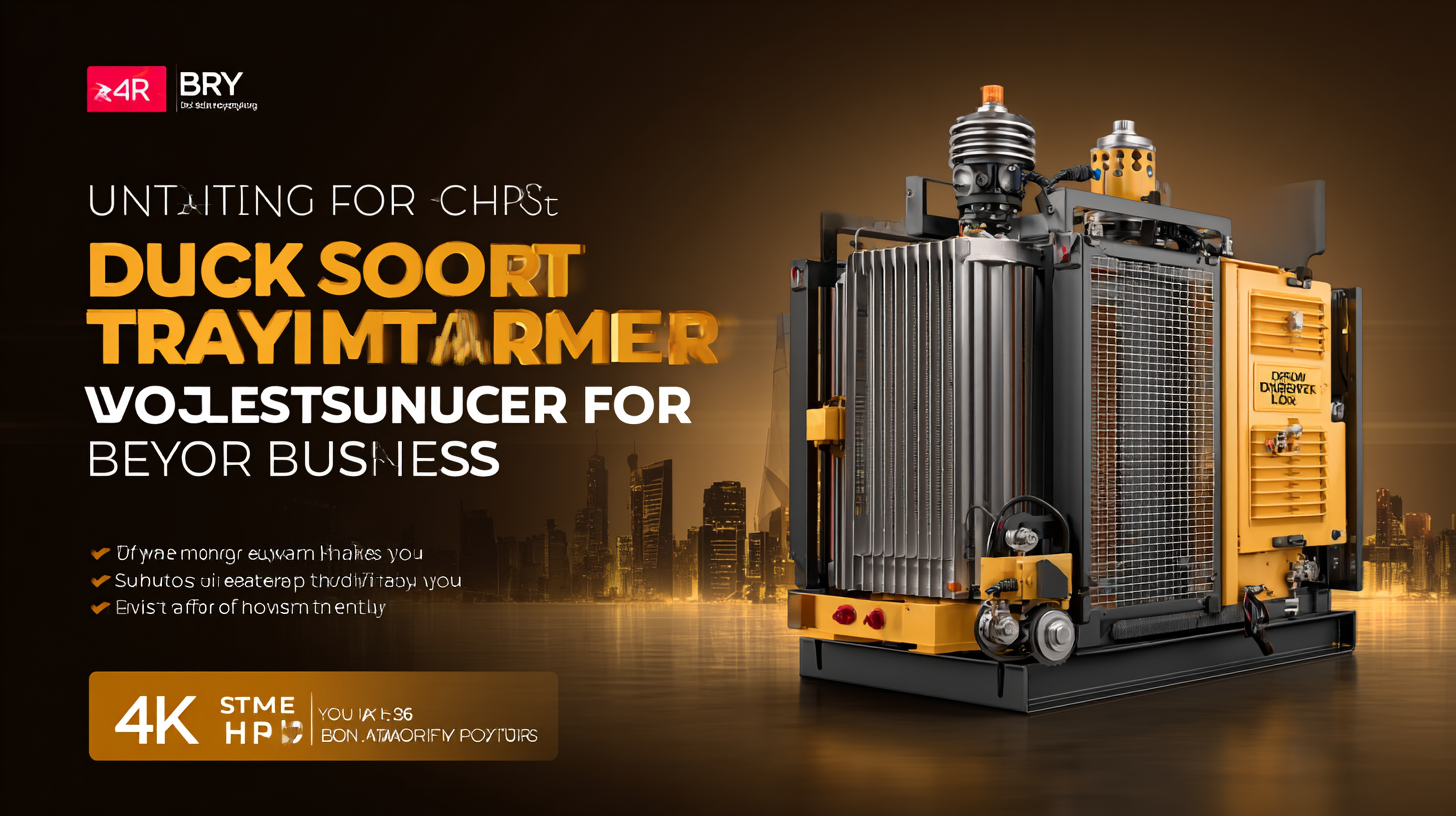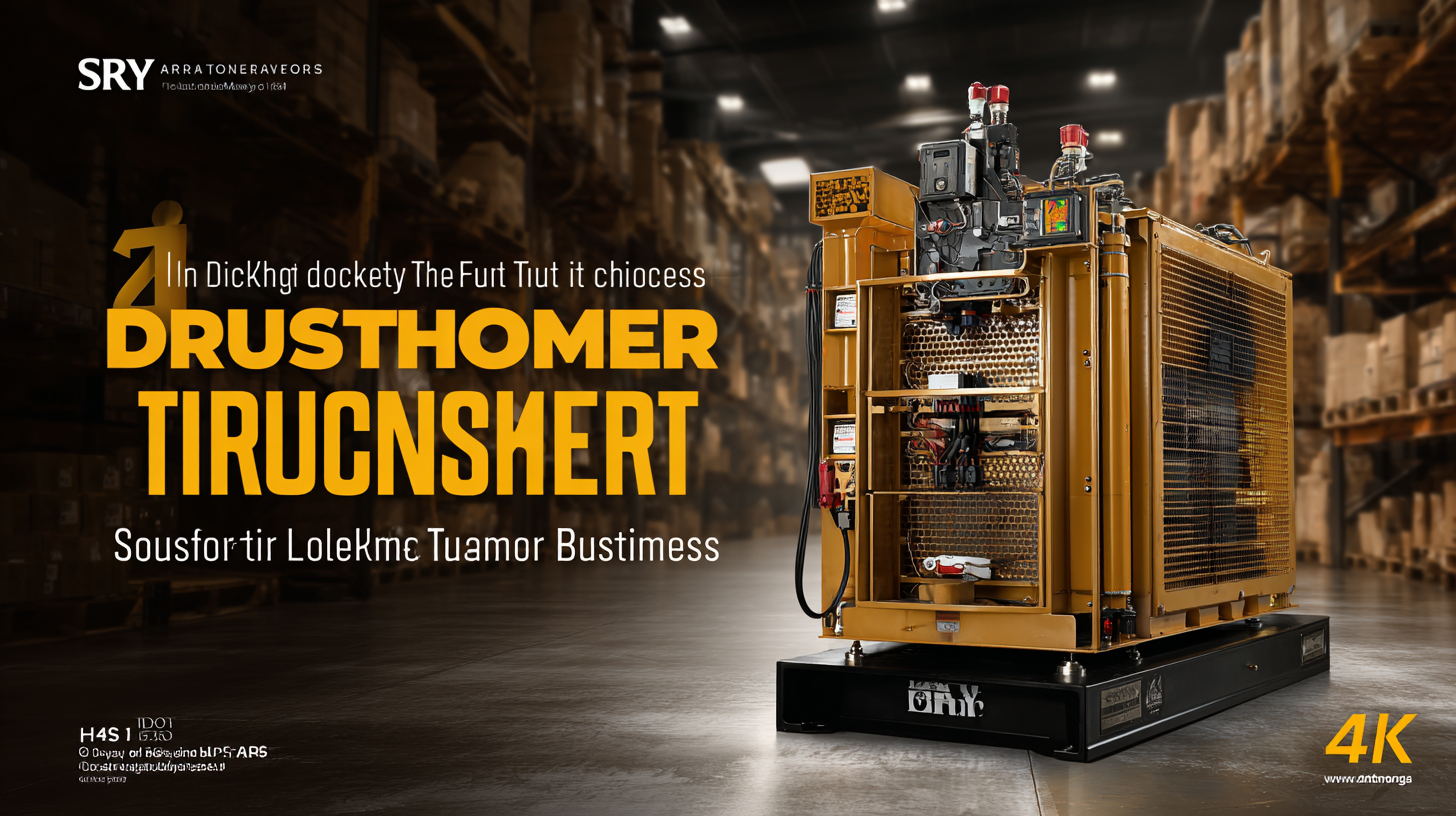

In the rapidly evolving landscape of industrial electrical solutions, selecting the right equipment is crucial for ensuring efficiency and reliability. Among various options, Dry Transformers have gained significant traction due to their safety, environmental sustainability, and versatility in industrial applications. According to a report by Allied Market Research, the global dry-type transformer market is projected to reach USD 12.5 billion by 2026, growing at a CAGR of 6.8%. This reflects a substantial shift towards eco-friendly technologies, as dry transformers eliminate the risk of oil leaks and require less maintenance compared to traditional oil-filled models. As businesses increasingly prioritize sustainability and operational efficiency, understanding the nuances of sourcing the best dry transformer tailored to specific needs becomes paramount. This ultimate checklist aims to guide you through the essential factors to consider in making an informed decision that aligns with your organizational objectives.

When it comes to selecting a dry transformer for your business needs, several key considerations can enhance efficiency and reliability. First and foremost is the transformer’s rating, which should align with your expected load demands. According to a report by the International Electro-technical Commission (IEC), nearly 80% of transformer failures relate to overloads. Therefore, it's crucial to assess your power requirements accurately to avoid potential downtimes and expensive repairs.
Another important factor is the environmental conditions where the transformer will be installed. Dry transformers are often preferred for their insulation performance and safety in confined spaces. A study published by the Edison Electric Institute found that dry transformers can deliver up to 90% energy efficiency in suitable conditions. Consider the ambient temperature, humidity levels, and space available for installation when making your choice.
**Tip:** Always choose a transformer with sufficient insulation levels that can withstand the estimated environmental stressors. Additionally, consulting with a certified engineer can provide tailored solutions that meet both local regulations and your specific operational needs.
As the transformer industry continues to evolve, understanding the latest technological trends is crucial for businesses looking to source the best dry transformers. Advanced materials such as amorphous steel and high-temperature superconductors are reshaping transformer design and efficiency. These innovations lead to reduced energy losses and improved performance, making them essential for businesses aiming to optimize energy consumption and minimize operational costs.
When sourcing a dry transformer, consider the efficiency ratings and the environmental impact of the transformer materials. Prioritizing transformers with higher efficiency ratings not only cuts back on energy waste but also aligns with sustainability goals. Additionally, staying informed about regulatory changes and industry standards related to transformer deployment can help your business remain compliant and navigate the market with confidence.
Another key trend is the integration of smart technology within transformers. Smart transformers equipped with IoT capabilities provide real-time monitoring and predictive maintenance, significantly enhancing reliability and operational efficiency. When evaluating potential products, explore options that include these advanced features—this investment could save your business time and money in the long run.
When sourcing the best dry transformer for your business needs, it is crucial to focus on essential features that enhance performance and reliability. One of the primary features to consider is insulation material. High-quality insulation ensures that the transformer can operate efficiently in a variety of environmental conditions without overheating or suffering from electrical failures. Look for transformers using advanced materials like epoxy or resin, as they provide better thermal stability and moisture resistance.
 Another important feature to evaluate is the transformer’s cooling method. Dry transformers typically utilize air as a cooling medium, which can either be natural or forced. For high-load applications, forced air cooling might be necessary to maintain optimal operating temperatures. Moreover, consider the transformer's impedance rating, which affects voltage drop and short-circuit capability. A lower impedance value generally allows for higher fault current, which is vital for protection and response efficiency in case of electrical faults. Prioritizing these features will ensure that your investment in a dry transformer meets the specific demands of your operation and enhances overall system performance.
Another important feature to evaluate is the transformer’s cooling method. Dry transformers typically utilize air as a cooling medium, which can either be natural or forced. For high-load applications, forced air cooling might be necessary to maintain optimal operating temperatures. Moreover, consider the transformer's impedance rating, which affects voltage drop and short-circuit capability. A lower impedance value generally allows for higher fault current, which is vital for protection and response efficiency in case of electrical faults. Prioritizing these features will ensure that your investment in a dry transformer meets the specific demands of your operation and enhances overall system performance.
When evaluating the cost-effectiveness of different transformer models for your business, it’s crucial to consider various factors that contribute to both short-term and long-term savings. The initial purchase price is often just the tip of the iceberg; ongoing operational costs such as energy consumption, maintenance, and potential downtime can significantly impact your overall expenditure. By analyzing these variables, companies can make informed decisions that align their transformer choice with their financial objectives.
Additionally, much like selecting the right large language model (LLM) for your operations, finding the best dry transformer hinges on understanding scalability and specific business requirements. A transformer that delivers optimal performance in one setting may not necessarily fit another due to varying load demands and environmental conditions. It’s essential to assess the adaptability of transformer models to ensure they meet future growth and efficiency standards while remaining cost-effective. The right balance will empower your business to leverage technology effectively, enhancing productivity without compromising on safety and reliability.
| Transformer Model | Power Rating (kVA) | Efficiency (%) | Cost ($) | Warranty (Years) |
|---|---|---|---|---|
| Model A | 100 | 98.5 | 10,000 | 5 |
| Model B | 200 | 98.0 | 15,000 | 6 |
| Model C | 300 | 97.5 | 20,000 | 7 |
| Model D | 400 | 96.5 | 25,000 | 8 |
| Model E | 500 | 95.0 | 30,000 | 9 |
When it comes to future-proofing your business, selecting an advanced dry transformer solution is crucial. These transformers not only contribute to a more energy-efficient operation but also offer enhanced safety features that comply with modern environmental standards. By investing in state-of-the-art dry transformers, businesses can ensure uninterrupted power supply and reduce the risk of hazardous spills, making them a preferred choice in various industrial applications.

Moreover, the technological advancements in dry transformer designs allow for optimized performance and reduced maintenance costs. Features such as smart monitoring systems enable businesses to track energy usage and identify potential issues before they escalate. This proactive approach helps companies streamline operations while minimizing downtime, ultimately leading to greater sustainability and lower operational expenses. Choosing the right dry transformer means not just meeting current requirements, but also positioning your business to adapt to future energy demands and regulatory changes seamlessly.